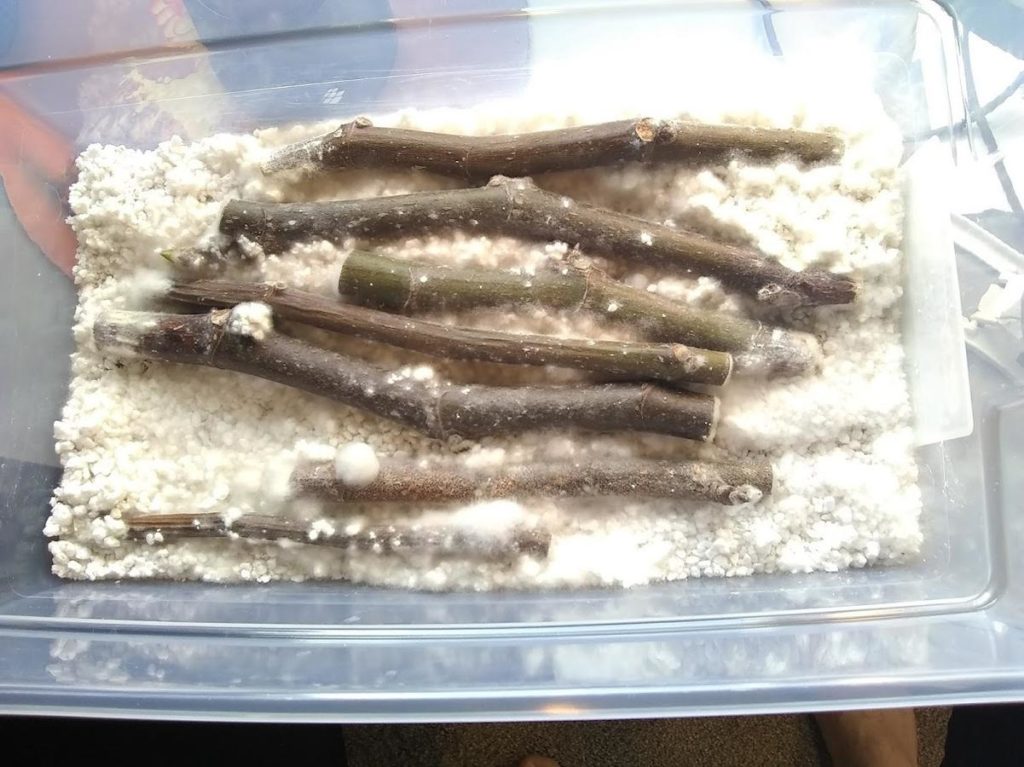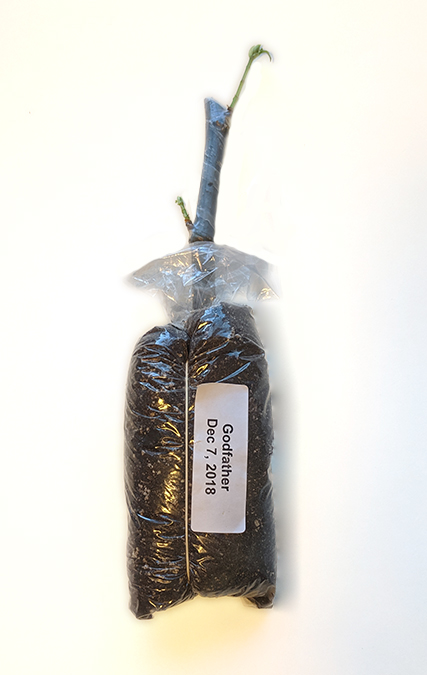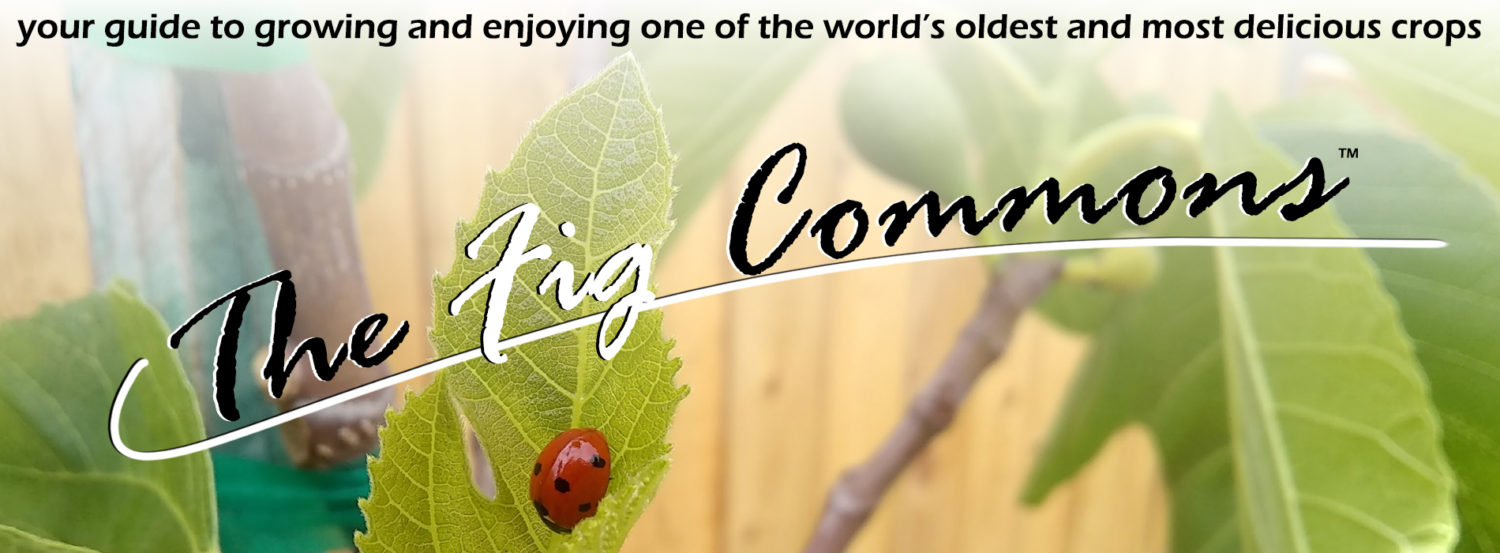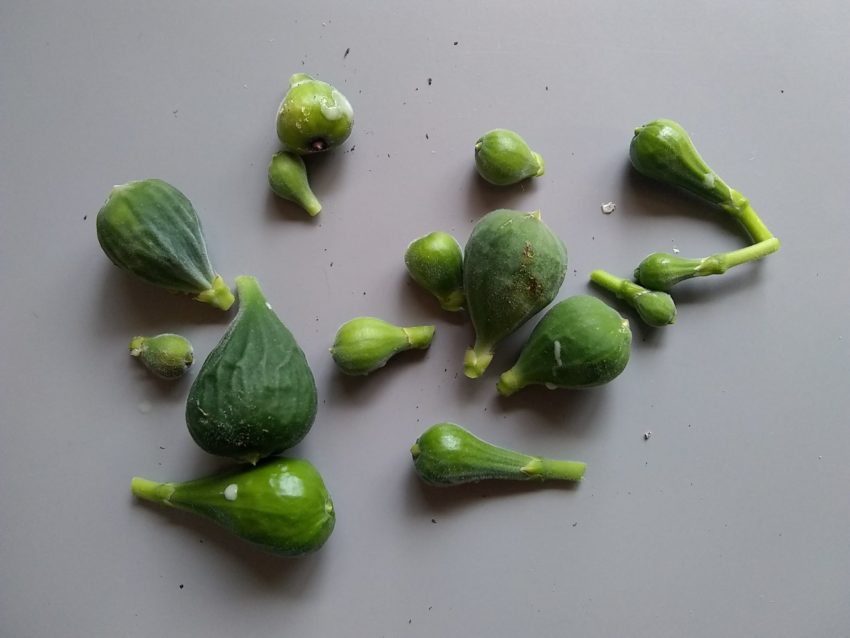For the first article in our series on how to grow fig trees from cuttings we are starting with the low hanging fruit, giving quick answers to the most common questions from new fig growers.
If you have a question you’d like to see answered here, please leave a comment or contact us!
1. Should I remove figs from my baby fig tree?
When growing a fig tree from a newly-rooted cutting it is not uncommon for the baby fig tree to develop fruit very early on, sometimes even before sprouting roots or leaves. This raises the obvious question: should I remove the figs? Or will the baby figs develop into edible fruit?
The short answer to the first question is an emphatic YES, remove those baby figs. It’s a sad thing to have to do, especially for the new fig grower, but trust me when I say that the figlets will never become full-grown edible figs — many of us have tried!! Rather, and this gets at the second question, those baby figs will use the cutting’s limited resources to support their growth for a while, but will eventually shrivel up and fall off. This is a waste of energy that the cutting could spend establishing the strong roots and leaves needed to produce the best tasting figs possible a little later in its life! Although it’s the most extreme outcome, there is the potential that fig tree utilizing its limited resources on growing fruit may stall development of leaves long enough that the plant never gets a chance to photosynthesize, and instead dies when its energy stores are depleted without the ability to harvest energy from the sun.
Removing the figs is simple enough, you can just grab them and twist them off. Note that the sticky white latex that seeps out of fig trees of all ages can irritate the skin, so be sure to wash your hands after removing the fruit from the baby fig trees, lest you risk adding injury (irritated skin) to insult (having to remove those lovely figs)!
I know you’re dying to eat those fresh figs, but at the end of the day you’re disappointed either way. So, if you get figs on a young cutting, pinch the fruit and give the future tree a stronger start. Wait until the tree is a couple of feet tall and looking vigorous before allowing fruit to remain.
2. My fig cuttings are molding! What should I do?
Mold is one of the major challenges faced when growing fig trees from cuttings, especially for those new to the hobby. First, if you’re finding that your cuttings are getting moldy, know that in the future you should increase fresh air circulation and decrease the moisture in the cuttings’ environment. More on that in our article on methods of growing fig cuttings.

So, your media was too moist and you’ve got moldy cuttings on your hands, what to do? The good news is that if you catch this early, the problem can be fixed. The bad news is that the conditions that lead to mold can also lead to rot, which generally cannot be reversed. Feel the cutting to see if it is spongy, or if the outer layer sloughs off when handled. If this is the case, the cutting is probably a goner, but you have nothing to lose by following the next steps if you wish. As soon as you notice mold forming on fig cuttings, take the following steps:
- Soak the cuttings in a bath of 3% hydrogen peroxide (this is the typical over-the-counter dilution). If you don’t have hydrogen peroxide on hand, you can use a 10% bleach/90% water solution. Leave the cuttings in the bath for 2 or 3 minutes.
- Wearing gloves, lightly scrub the moldy areas with a soft toothbrush. Return cuttings to the bath for another minute or two.
- If the top of the cutting looks like it may be in the early stages of rot, or if the mold appears to have taken hold, you may cut that bit of it off to prevent spread.
- Remove cuttings from the H2O2 or bleach bath. No need to rinse the cuttings after the bath, since the residue could help keep future mold at bay.
- Return the cuttings to their rooting environment. Moving forward you’ll want to reduce the moisture in that environment, and allow fresh air to circulate once a day by opening the lid/baggie/etc.
- Be sure to separate the moldy cuttings from those without mold, since you want to discourage mold from spreading from one fig cutting to the others.
- Learn from this. Pay attention to what moisture levels lead to this problem, and keep the environment drier in the future. Also, next time you might consider a bleach bath as soon as you start your cuttings.
Good luck! You’re not alone, mold on cuttings is an extremely common issue for fig growers, and one you’ll learn to manage or avoid over time.
3. It’s been a month or more and my cutting isn’t sprouting roots or leaves! What should I do?
WAIT! If the moisture is at a good level — which is to say low enough to avoid mold and rot, but high enough to create a humid environment — you shouldn’t attempt to wake the sleeping baby fig tree. Anecdotes abound of fig growers who tossed old, unsprouted cuttings into the compost heap or a bag behind the shed only to discover roots and leaves months later.
The quickest you’re likely to see roots and leaves is a week or so, with three-ish weeks being typical, but it happens from time to time that a cutting takes two, three, even four months before it gets going. This isn’t a problem if you get the environment right. The picture below is of a cutting I started in early December, and it just showing signs of life in late May!

If you just don’t have the patience and want to intervene, you can try to speed things up a bit by setting the cutting on a tray a few inches above a seedling heat mat. You don’t want to set the cutting directly on the mat, since that tends to dry out the bottom of the media, often leading the bottom of the cutting to dry out beyond repair. If you raise the cuttings a few inches, they get warmed up in a more diffuse fashion.

